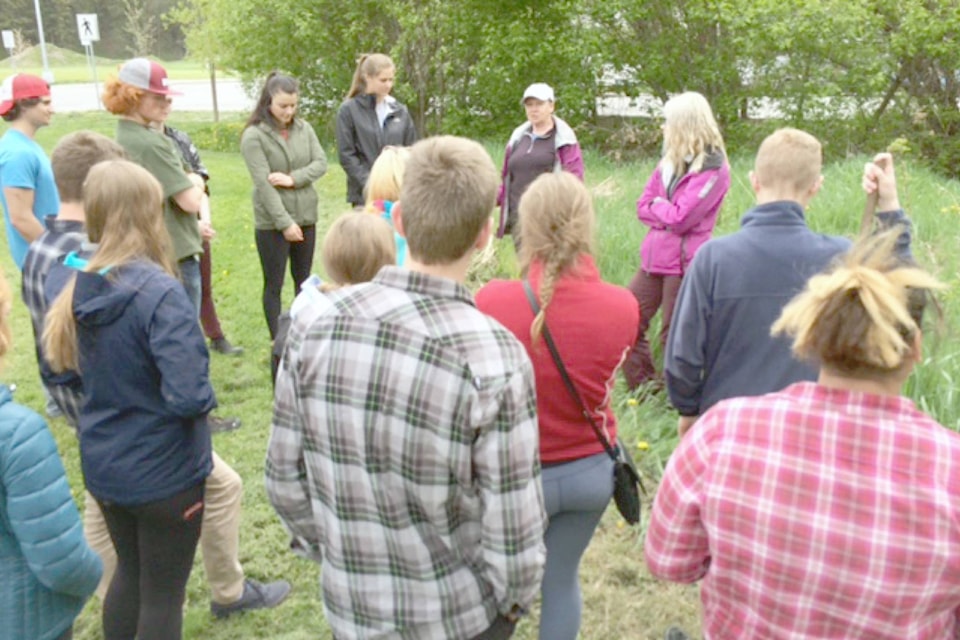We turn on our taps and water comes out. We pull the plug, and there it goes. But where did the water come from? Where did it go?
This spring, students from Rossland Summit discovered that the answers to those questions are much more complex than the conveniences of modern life have led us to believe.
Their journey through the water cycle story was led by Know Your Watershed, an education program from the Columbia Basin Trust.
This program, administered and managed by Wildsight, sees local educators visit classrooms for sessions on all things water and takes students on full-day field trips into their community’s watershed. Over the course of a few days, students learn how their water gets from the mountains to the faucet — and all about the return journey down the pipes, through wastewater treatment and back into the water cycle.
The Grade 9’s at Rossland Summit School took their water investigation even deeper by creating different topographic maps—Rossland Today, Climate Change, Utopia—for their local watershed.
Their map of the current state of the watershed included the major local streams and required learning some city water regulations and discussing all the ways the community uses water.
For the second map, students discovered the different ways climate change can alter a watershed, and how to display those ideas topographically. And for the Utopia map, students had to come up with ideas on how to reduce water consumption and create new systems for a more sustainable environment.
“Spring really is a perfect time to be out looking at issues that affect our water supply, and try to understand the complex variables that can change water quality, and water quantity in our local watersheds,” said Wildsight’s Know Your Watershed Coordinator Dave Quinn. And with the program being updated alongside the revised BC curriculum and moving from Grade 8 to Grade 9 classrooms this year, the seventh season of Know Your Watershed — much like the time between winter and summer—was one of transition.
Given that some students were getting a bonus year of watershed knowledge, topics were tailored to the individual classroom to avoid repetition. Some students learned about the 1964 Columbia River Treaty, the international agreement between Canada and the United States to coordinate flood control and optimize hydro power generation on both sides of the border.
Some students participated in hands-on learning about water quality monitoring and macroinvertebrates, those tiny creatures that live in our waterways, as indicators of stream health. Water cycles, our daily water use, and the challenges of wastewater treatment were all on the learning menu.
This combination of updated curriculum and returning faces, mixed in with some fresh student action and learning projects, made for an exciting new season of Know Your Watershed throughout the Columbia Basin. So if you see a community youngster deep in thought at the water fountain, now you know why.
